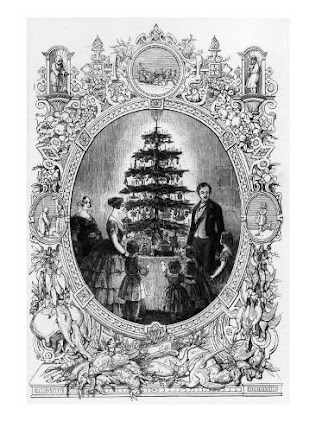Christmas Treasures (4):
Written by Margaret Ikladious
In continuation to the previous parts of the treasures of Christmas, today we will talk about some other symbols in the Christmas celebrations that have spread around the world:
Fourth: The Christmas Tree:
It symbolizes with its greenness the initial life of Christ. Today, most countries celebrate decorating the New Year tree, which is the most common custom.
Its origin goes back to the Pharaonic era. The ancient Egyptians were the first to celebrate Christmas and the Christmas tree in the first month of Kiahk, in which water is confined, and greenery returns to the earth, symbolizing the resurrection).
It celebrates the resurrection of Osiris after his death and his transformation, according to legend, into a green tree. Therefore, one of the most important traditions of this holiday is to choose an evergreen tree throughout the year as a symbol of renewed life. This custom was transmitted from Egypt across the Mediterranean to appear on the feasts of the Romans, who used the shepherd's tassel tree or the shepherd's bag as part of their decorations. The birthday of the invincible sun.
Then Christianity came and took its thorny leaves as a symbol of Christ's wreath, and its red fruit was a symbol of his blood.
The needle shape of the tree facing upwards symbolizes the prayers directed towards the sky.
In Rome, people used to decorate homes and balconies on the festivities that begin in the last week of the year.
In Athens, celebrations revolved around a tree in the middle of the city called the World Tree.
In the celebration of Christmas, the Christmas tree is chosen from trees that retain their green throughout the year, such as fir, cypress, or pine.
The idea of the tree began to spread widely and in various forms at the hands of Pope Boniface in Germany in Europe from the 15th century AD in the Alsace region in France.
At first, it was decorated with red apples, roses, and ribbons of cloth.
It is believed that Martin Luther, the Protestant reformer, was the first to light a Christmas tree with candles.
On returning home on a dark winter night near the Christmas period, he discovered the beauty of bright starlight through the branches of small spruce outside his house. He simulated the starlight using candles hung on the Christmas tree branches inside his home.
The first three mentioned were in Strasbourg in 1605 AD.
But the first colossal tree was the one that was erected in the royal palace in England in the year 1840 AD during the reign of Queen Victoria, and then the use of the tree quickly spread as an essential part of Christmas decorations.
Follows

Post a Comment